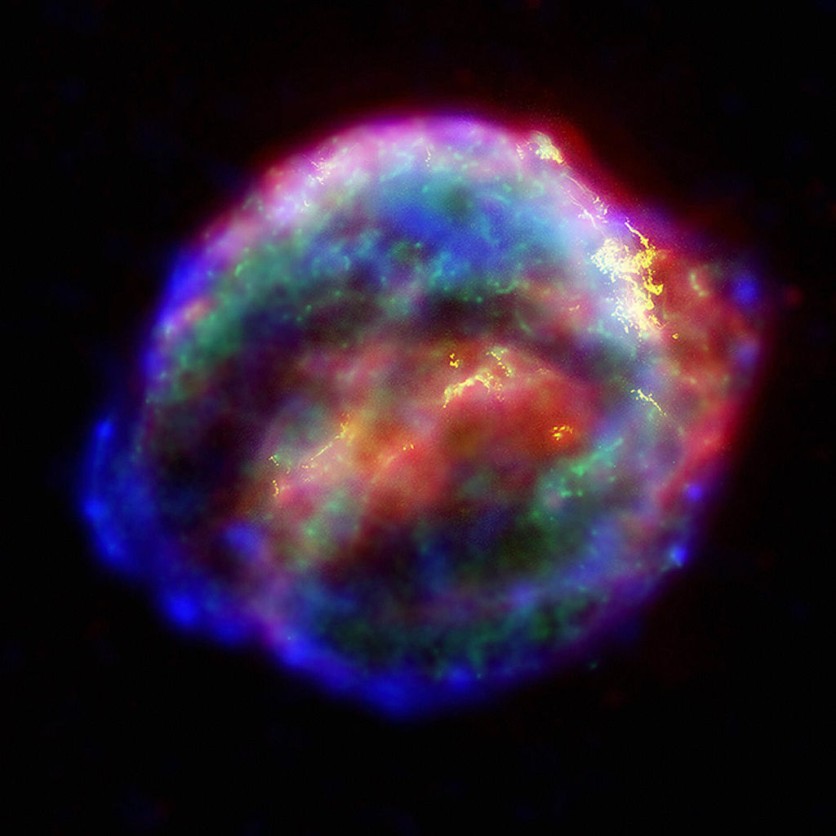NASA's Chandra X-ray Observatory has revealed a captivating time-lapse video showcasing the aftermath of the "Great Eruption" of Eta Carinae, an event witnessed on Earth in the mid-19th century.
The footage, compiled from Chandra's observations over two decades, offers frames from 1999, 2003, 2009, 2014, and 2020. This visual record illustrates the ongoing expansion of the eruption, now moving at speeds of up to 4.5 million miles per hour. You can watch the video here!

NASA: The Great Eruption
Eta Carinae comprises two colossal stars, with one estimated to be approximately 90 times the mass of the sun and the other around 30 times its mass.
The "Great Eruption" in the 1840s saw Eta Carinae expel a substantial amount of material, ranging between 10 to 45 times the sun's mass. This material coalesced into two dense spherical gas clouds, known as the Homunculus Nebula.
A ring of intense X-rays encircling the Homunculus Nebula was initially identified about half a century ago. The recent Chandra video and composite image unveil crucial insights into Eta Carinae's turbulent past, including the rapid expansion of the ring and the discovery of a previously unnoticed faint X-ray shell surrounding it.
Michael Corcoran, who led the study at NASA's Goddard Space Flight Center, remarked: "We've interpreted this faint X-ray shell as the blast wave from the Great Eruption in the 1840s. It tells an important part of Eta Carinae's backstory that we wouldn't otherwise have known."
The newly identified outer X-ray shell shares a similar shape and orientation with the Homunculus Nebula, suggesting a common origin for both structures. The prevailing theory proposes that material was ejected from Eta Carinae well before the Great Eruption, likely between 1200 and 1800.
This material, identified by the motion of gas clumps observed by NASA's Hubble Space Telescope, was later struck by the high-speed blast wave from the Great Eruption, generating the brilliant X-ray ring.
Plot Twist
Kenji Hamaguchi, a researcher at the University of Maryland in Baltimore County and NASA's Goddard, expressed surprise at the discovery, stating, "The shape of this faint X-ray shell is a plot twist in my mind.
It shows us that the faint shell, the Homunculus, and the bright inner ring likely all come from eruptions from the star system." Analysis with ESA's XMM-Newton and NASA's Neutron Star Interior Composition Explorer (NICER) telescope on the International Space Station confirmed a fading brightness of Eta Carinae over time.
Applying a simple model, researchers estimated the brightness of Eta Carinae in X-rays during the Great Eruption. They combined this with the speed of the ejected material, as determined from the video, to gauge the rapidity of the high-speed gas expulsion.
This comprehensive analysis concluded that the Great Eruption likely involved two separate explosions. Initially, a swift ejection of a small amount of fast, low-density gas resulted in the X-ray blast wave. It was followed by the slower expulsion of denser gas that formed the Homunculus Nebula.
Nathan Smith, a co-author of the study from the University of Arizona, asserted that the cataclysmic Great Eruption could have stemmed from the merger of two stars that were initially components of a triple system.
This hypothesis finds resonance in the ring-like configuration detected in X-rays, as a merger of this nature would result in the expulsion of material in a planar manner. The findings of the study were published in The Astrophysical Journal.

ⓒ 2025 TECHTIMES.com All rights reserved. Do not reproduce without permission.




